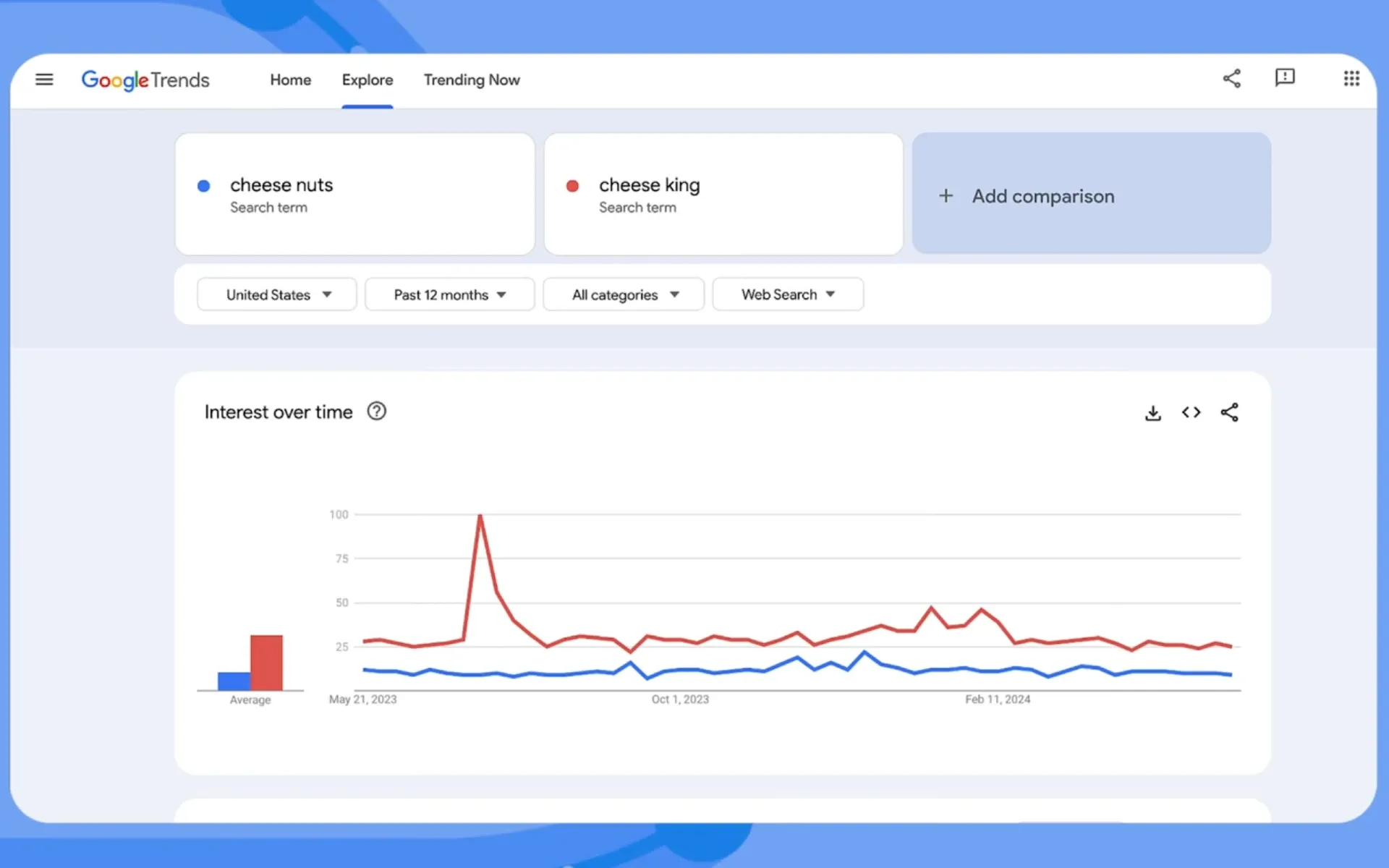Google unveils techniques to boost marketing with search data
Learn how businesses can leverage Google Trends for vertical analysis, competitor benchmarking, brand monitoring, and keyword research.

In a recent YouTube video published on October 10, 2024, Google experts Daniel Waisberg, Search Advocate, and Omri Weisman, Google Trends Engineering Manager, shared valuable insights on utilizing search data to enhance marketing and sales strategies. Their presentation highlights four key techniques that companies can implement using Google Trends to improve their business operations, whether online, offline, or both.
One of the primary techniques discussed involves analyzing overall vertical trends within specific industries. This approach allows businesses to gain insights into consumer interests and preferences over time, helping them make informed decisions about product offerings and inventory management.
Waisberg and Weisman used a fictitious gourmet cheese store, "Cheese Nuts," to illustrate their points. Using Google Trends data, they revealed significant variations in search interest for different cheese types. Parmesan cheese showed the highest interest and a growing trend over time, while brie exhibited strong seasonality, peaking during Thanksgiving and winter holidays in the United States. Mozzarella maintained a relatively constant interest level, and cheddar experienced a slight increase between October and February.
This information can be crucial for businesses in planning their product availability and managing stock levels. Furthermore, it can guide content creation strategies, such as preparing blog posts about brie-related recipes before holiday seasons to drive more traffic from Google Search.
Benchmarking against competitors
Google Trends also offers a powerful tool for businesses to benchmark themselves against competitors. By comparing search interest for different brands or products, companies can gain valuable insights into their market position and identify areas for improvement.
The process involves entering competitor names into Google Trends and analyzing the results over time. This comparison can reveal how well a business is performing relative to its competitors in different regions, metro areas, and cities. Such data can be invaluable when making decisions about expanding operations or opening new stores.
Additionally, the related search terms associated with competitors can provide ideas for content expansion and highlight areas where competitors might be excelling.
Analyzing brand awareness and sentiment
As businesses grow, monitoring brand perception becomes increasingly important. Google Trends offers a way to track what people are saying about a brand across both Google Search and YouTube.
Waisberg and Weisman recommend entering the business name in Google Trends and examining related search terms over the past 30 or 90 days. Companies can gain insights into the terms people use in connection with their brand. This information can help identify potential issues or opportunities in brand perception and guide marketing strategies accordingly.
Researching keywords for ad campaigns
Finally, Google Trends can be a valuable resource for keyword research, particularly for advertising campaigns. By analyzing the performance of existing ad campaigns and identifying the most profitable keywords, businesses can use Google Trends to expand their keyword strategies.
The experts used the example of a company focusing on the keyword "cheese platter." Through Google Trends, they discovered that "charcuterie" had significantly more interest. This insight could lead to a diversification of product offerings or marketing strategies to capitalize on related trends.
Key takeaways
The techniques shared by Waisberg and Weisman for leveraging search data include:
- Understanding overall vertical trends to plan product availability and content strategies
- Benchmarking against competitors to identify market positioning and expansion opportunities
- Analyzing brand awareness and sentiment to monitor public perception
- Researching keywords to enhance ad campaigns and identify new market opportunities
These strategies aim to help businesses make data-driven decisions and improve their overall marketing and sales performance.
Expert insights
Waisberg and Weisman emphasize the importance of using data to inform decision-making processes across various aspects of business operations. They demonstrate how Google Trends can be a powerful tool for businesses of all sizes to gain valuable insights into consumer behavior and market trends.
As the digital landscape continues to evolve, tools like Google Trends offer businesses the opportunity to develop more targeted and effective marketing strategies, ultimately leading to improved sales performance and customer engagement. The experts encourage businesses to explore these techniques and apply them to their specific industries and contexts.

